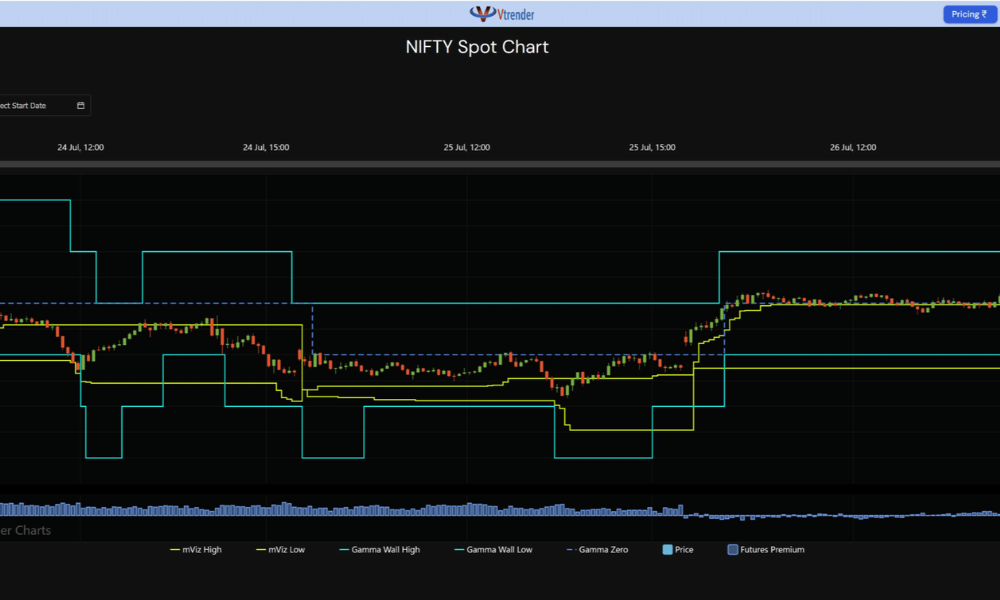Delta Neutral Vs. Gamma Neutral
Risk management serves as the backbone of successful trading, particularly in derivatives like options where market volatility can substantially influence profits and losses. Two prevalent hedging strategies in this context are the Delta Neutral and Gamma Neutral strategies. Despite both being used to manage risk, the latter is often perceived as a superior tool for hedging.
Let’s delve into the intricacies of these strategies, using a practical example of Nifty at 19800, with a Delta of 0.50 and a Gamma of 0.0025.
Deciphering the Greeks: Delta and Gamma
Before we deep dive into the strategies, it’s critical to comprehend the basics of Delta and Gamma – two fundamental ‘Greeks’ in options trading.
Delta gauges how much an option’s price changes for every one-point movement in the underlying asset, in our case, Nifty. If Nifty has a delta of 0.50, this signifies that for every point Nifty moves, the option’s price will adjust by 0.50 points.
Gamma, conversely, measures how much the Delta changes for every one-point shift in the underlying asset. So, a gamma of 0.0025 means that for every point that Nifty moves, the Delta of the option will modify by 0.0025.
Delta Neutral Strategy
A Delta Neutral strategy refers to a scenario where the overall Delta of a portfolio is zero. This infers that regardless of how the price of the underlying asset fluctuates, the portfolio’s value will stay consistent.
Imagine we take a position where we’re short on Nifty Calls at 19800 with a delta of 0.50. For every point that Nifty moves, the position would gain or lose 0.50 points. To hedge this, we can adopt an opposing position in another option such as the Nifty 19800 Put with a delta of -0.50.
Consequently, we have a delta-neutral position – the profits from one position counterbalance the losses from the other, insulating the portfolio from price variations in Nifty.
However, this strategy has a limitation – it only functions if the underlying asset’s price alters linearly.
In real-world markets, prices seldom move linearly, and the Delta itself evolves as the price varies. This is where Gamma and, subsequently, the Gamma Neutral strategy comes to the fore.
Gamma Neutral Strategy
Gamma neutral strategies are a type of options trading strategy that aims to reduce the risk of a portfolio by hedging against changes in the delta of the options in the portfolio.
Delta is a measure of how the price of an option changes in relation to the price of the underlying asset. Gamma is a measure of how delta changes in relation to the price of the underlying asset.
A gamma neutral strategy is achieved by adjusting the positions in a portfolio such that the total gamma of the portfolio is zero. This means that the portfolio will not be sensitive to changes in the delta of the options in the portfolio.
There are a number of ways to achieve a gamma neutral position.
One way is to sell options with a gamma that is equal and opposite to the gamma of the options that you are holding.
How is gamma neutral used in the real world
Big money is never directional and wants to always be minimally biased so that they are shielded against large price swings both up and down
Suppose a big dealer ends up with a short gamma exposure of say 0.50. Let’s assume he has a short call position which is having a current delta of 0.5. To hedge his positions against potential upsides he can either by the stock in a quantity equal to his current derivative position or go long futures. If the price of the underlying moves too high suddenly, you will see him selling some of his long futures or long stock position effectively cutting some upside and introducing latent supply in the market.
If the price drops post his entry and his short gamma position is profitable, he will now be forced to buy the stock lower to ensure his position remains gamma neutral. In both cases he is a buyer but for different reasons.
If he has a short put exposure, he would keep increasing the short futures he is intending to hold to offset the effect of the short put position. In this case he is a seller of stock or of futures and you can say the market has momentum to the downside.
But there would still come a time where he would cut down on his Futures position to ensure that the position is gamma neutral and a series of such moves can establish a floor to the markets’ downside behavior
How can I keep a track of all of this?
Let’s look at the graph below

The blue lines are the current expectations of the market and represent the zone where the option inventory is comfortably hedged.
They would not worry as long as price stays within the blue lines for the settlement.
The settlement closest has the max volumes and is tracked on the charts.
The yellow lines moving up or down is the adjustment done by big money to a change in the delta and gamma of their positions.
The blue lines and the yellow lines only shift when the market is adjusting it’s current inventory
Conclusion
While it’s evident that the Gamma Neutral strategy offers a more comprehensive hedge than Delta Neutral, it’s pivotal to remember that these strategies require ongoing monitoring and adjustment.
Furthermore, they’re advanced strategies, which may not suit everyone. They are mostly employed by BIG BOYS or the big money.
It’s vital to thoroughly grasp the dynamics of Delta and Gamma, their interaction with each other and with the underlying asset’s price, and their impact on the value of options before employing these strategies. Robust risk management, perpetual learning, and staying updated with market movements are the keys to success in options trading.
